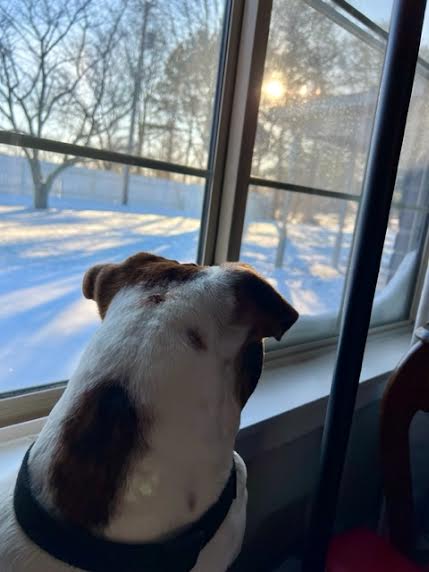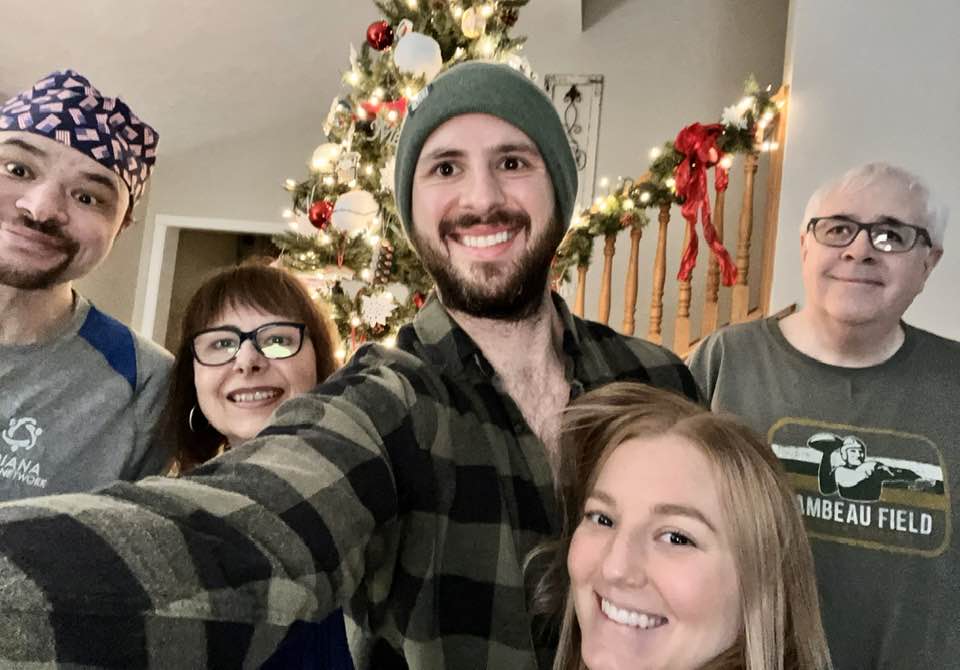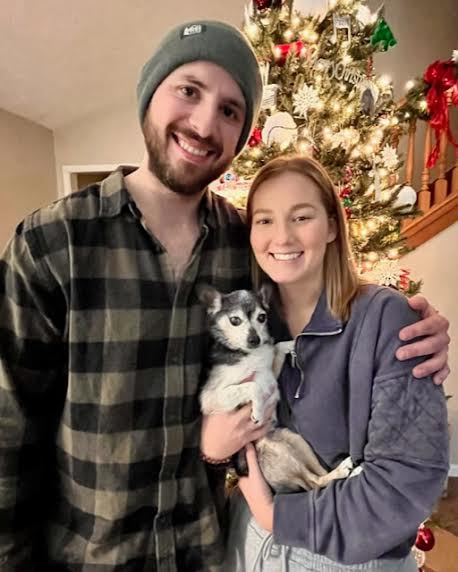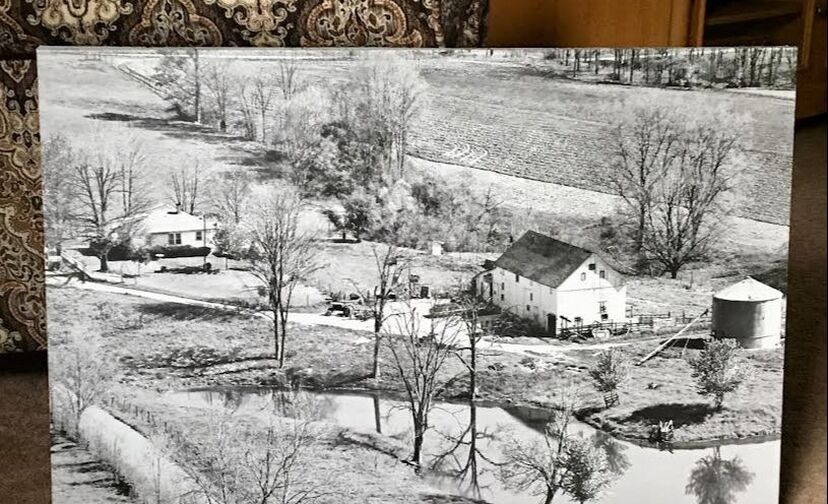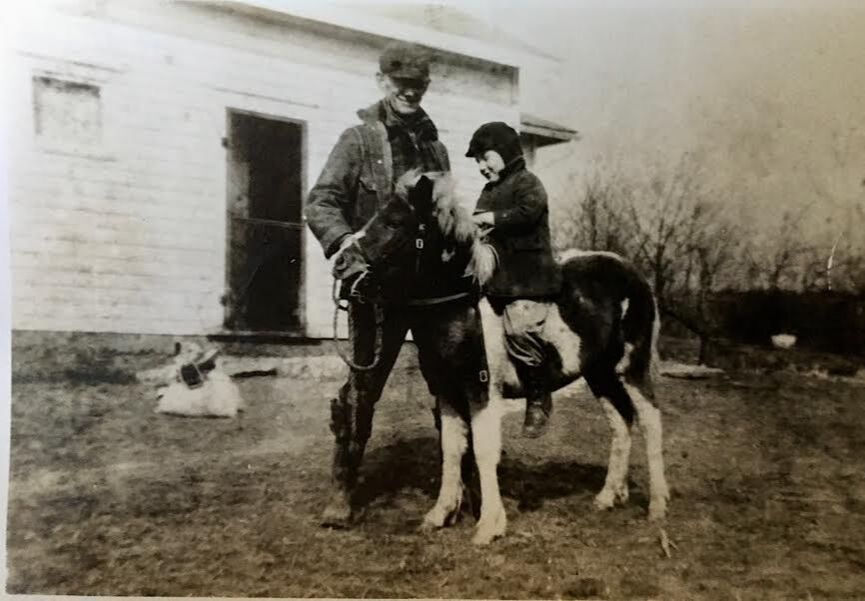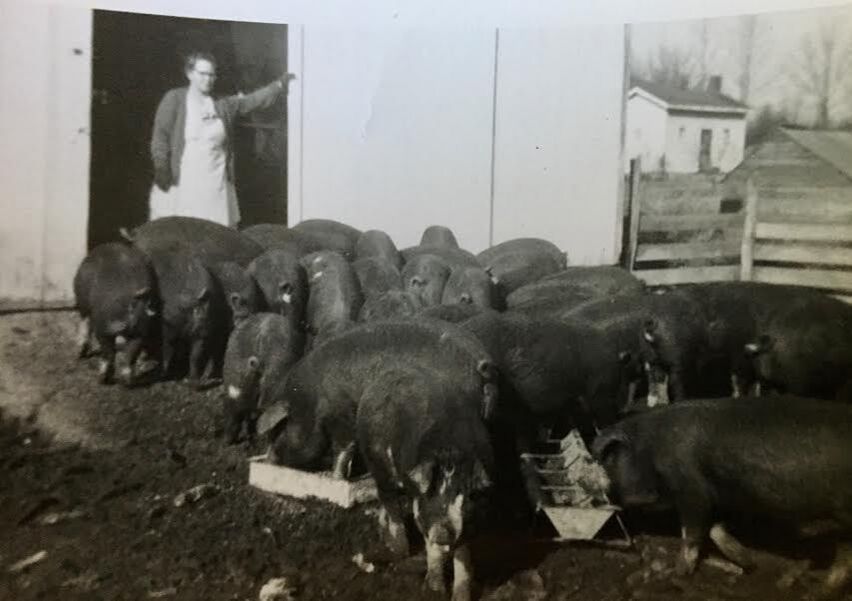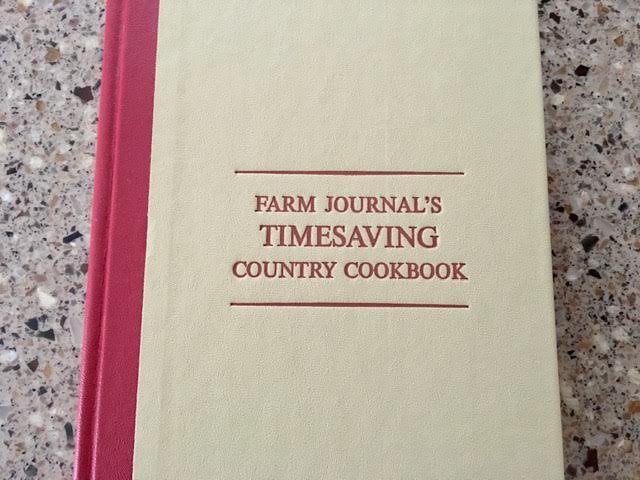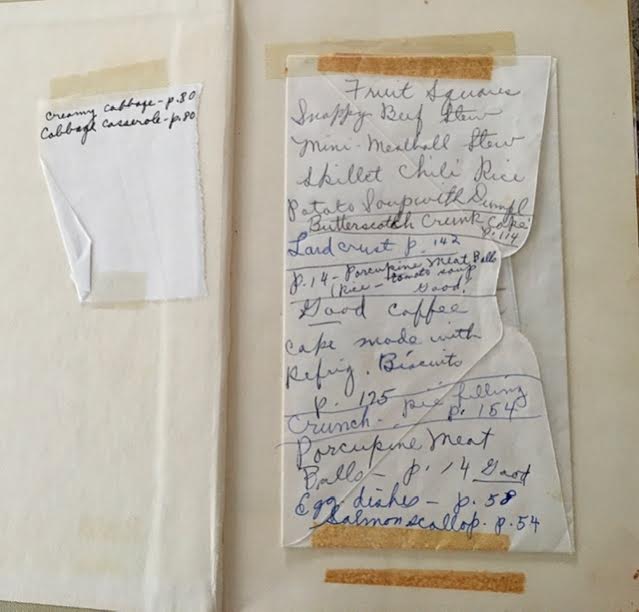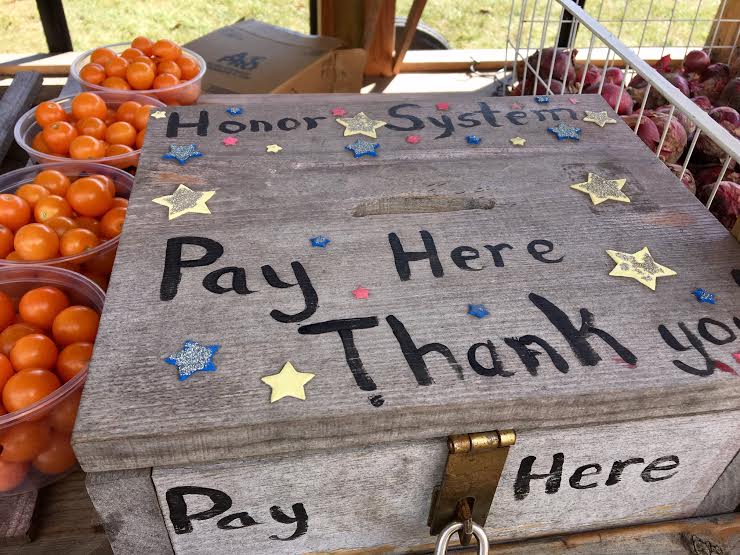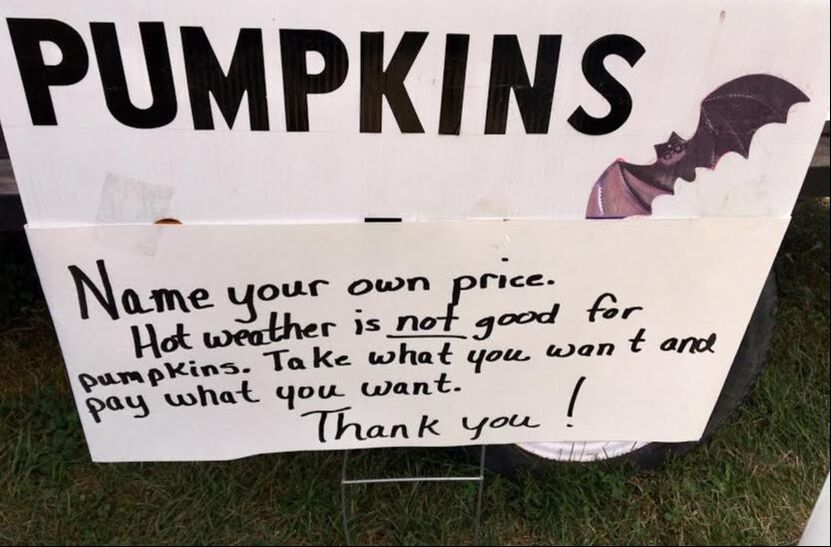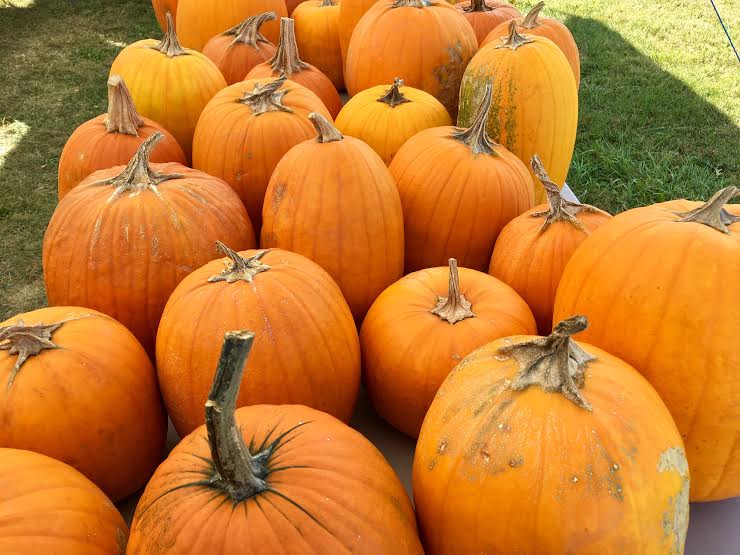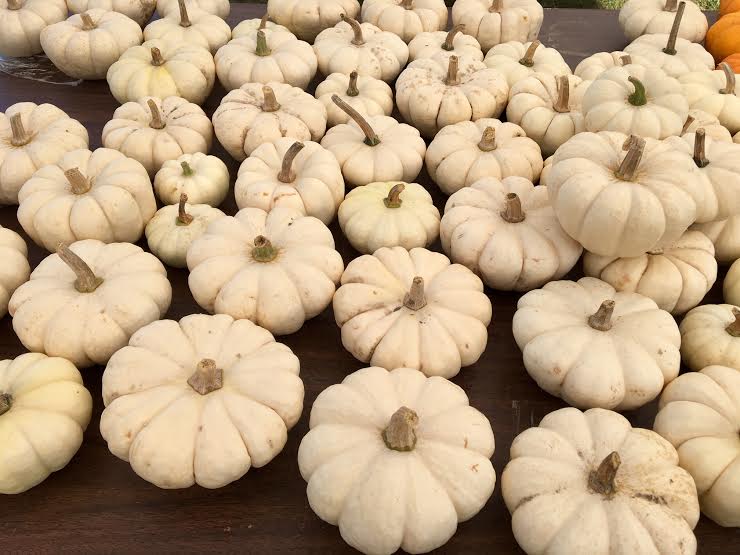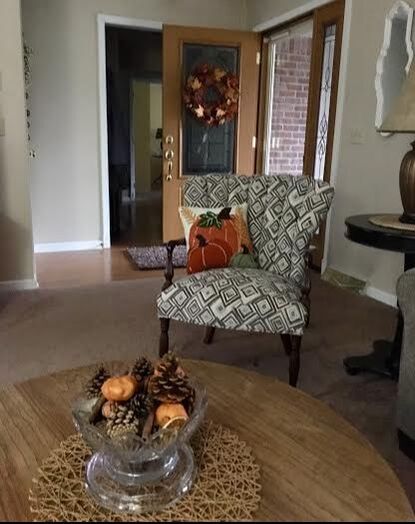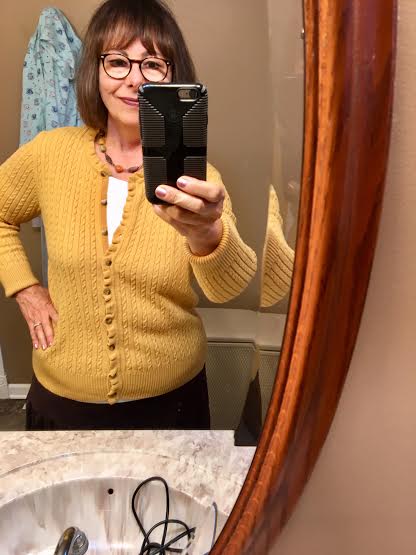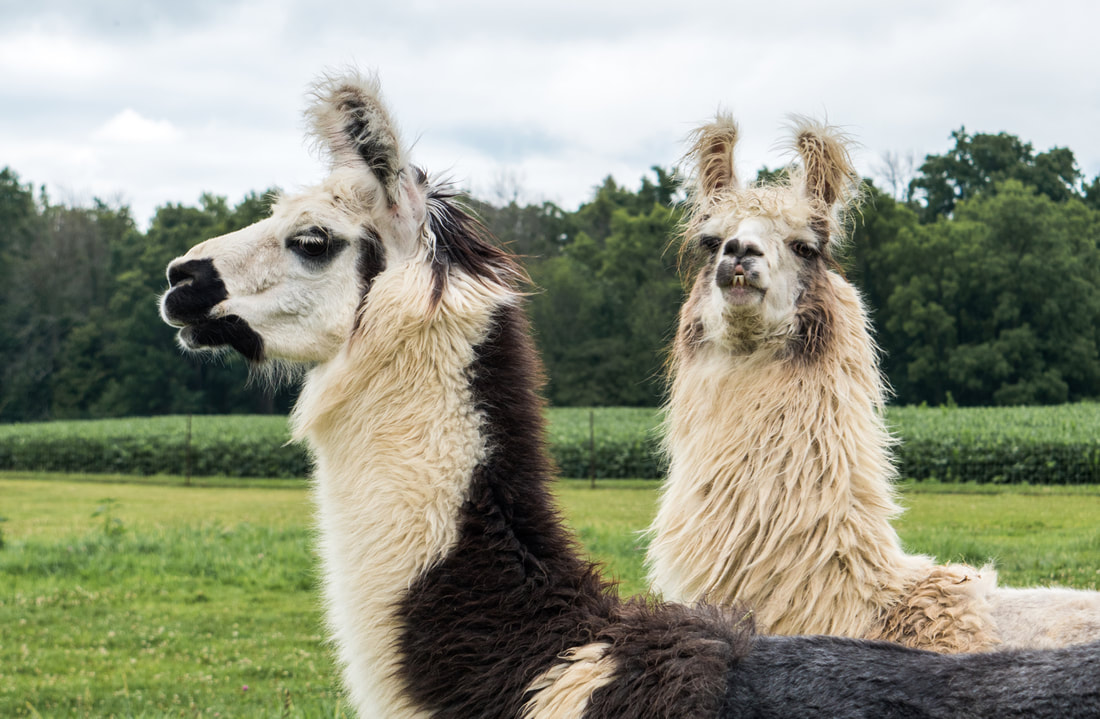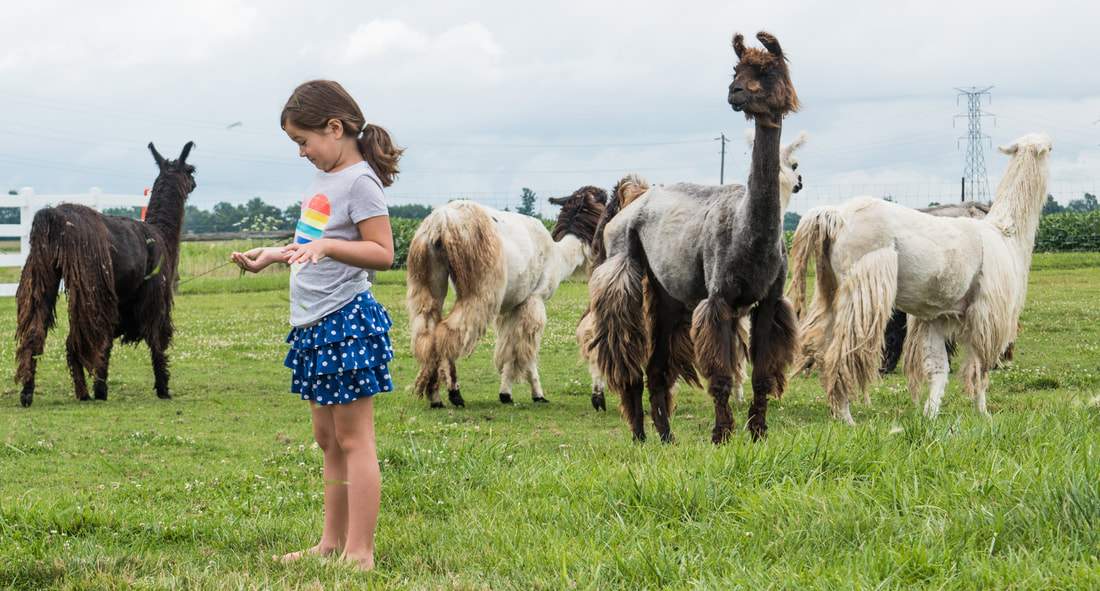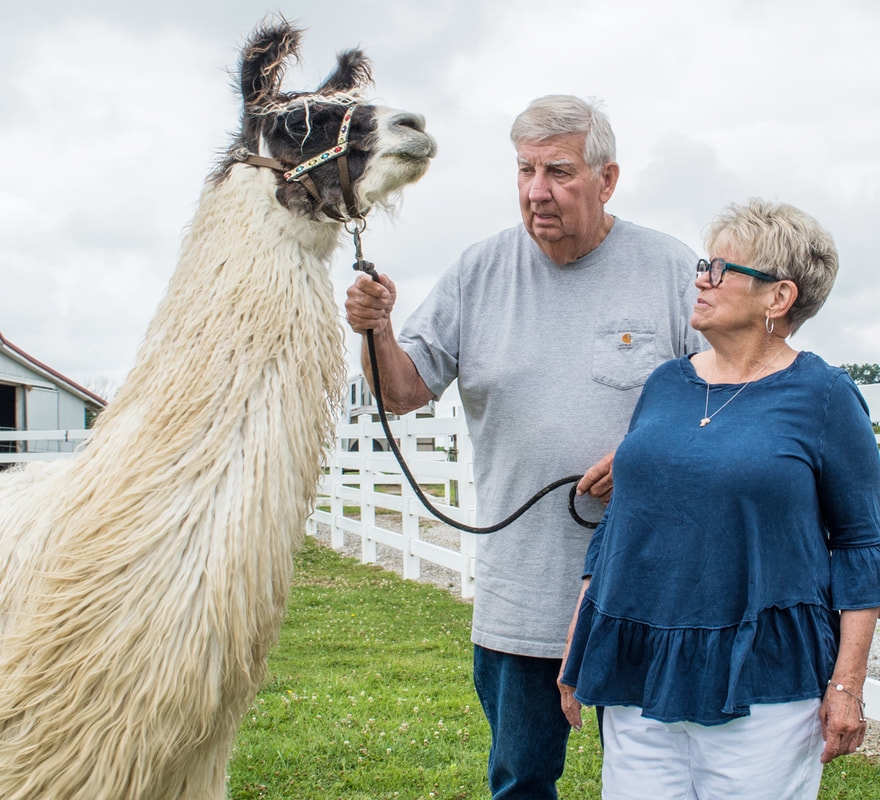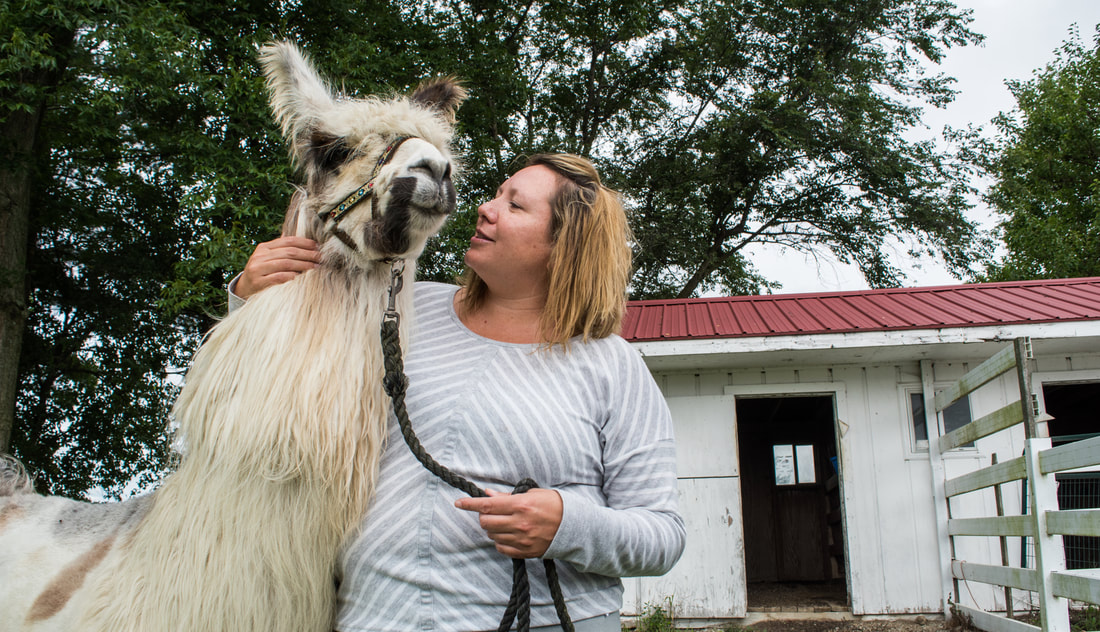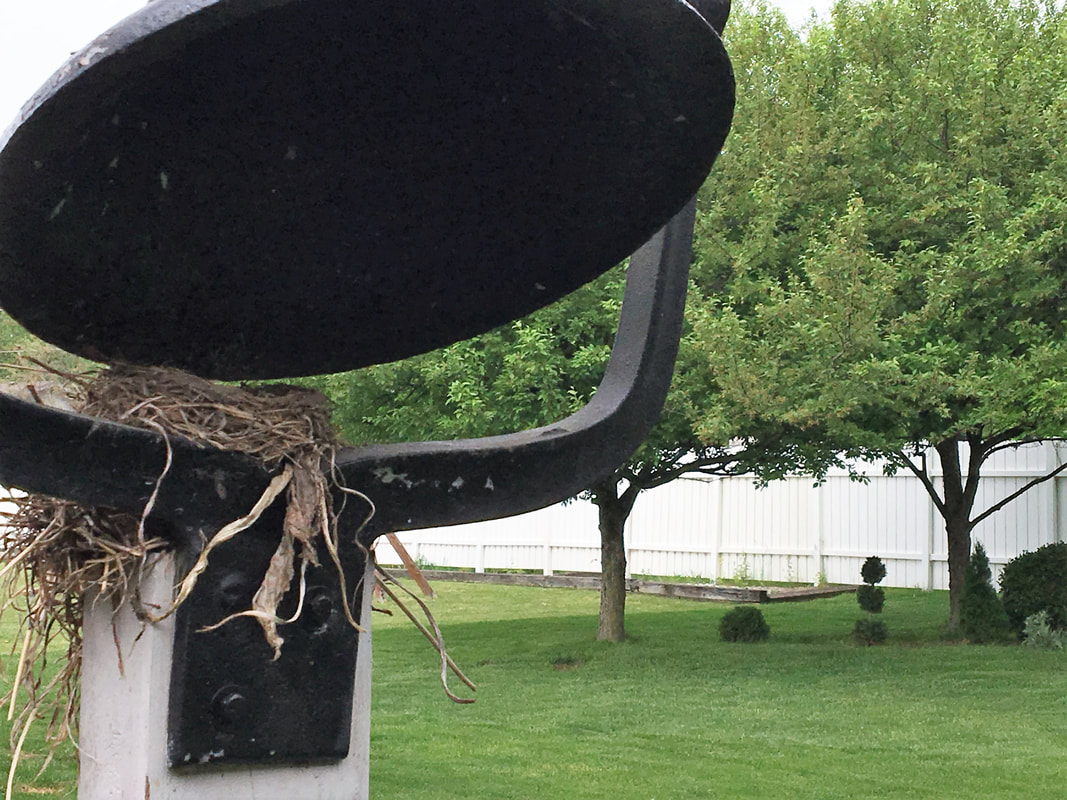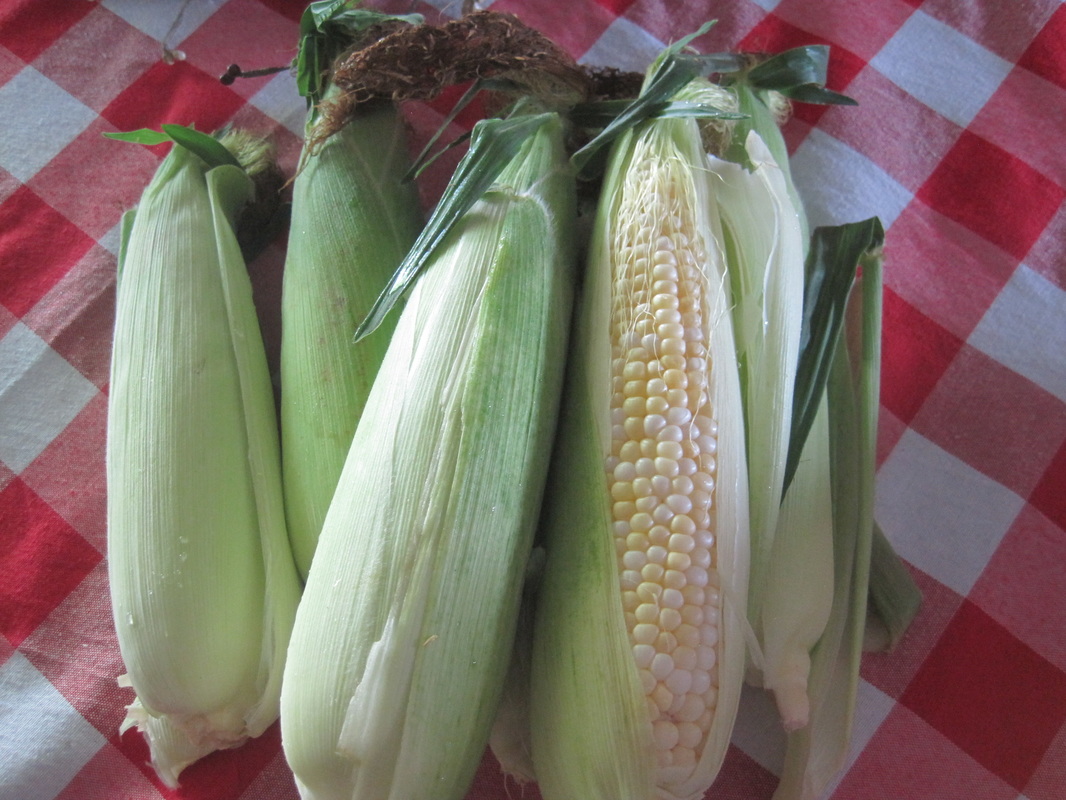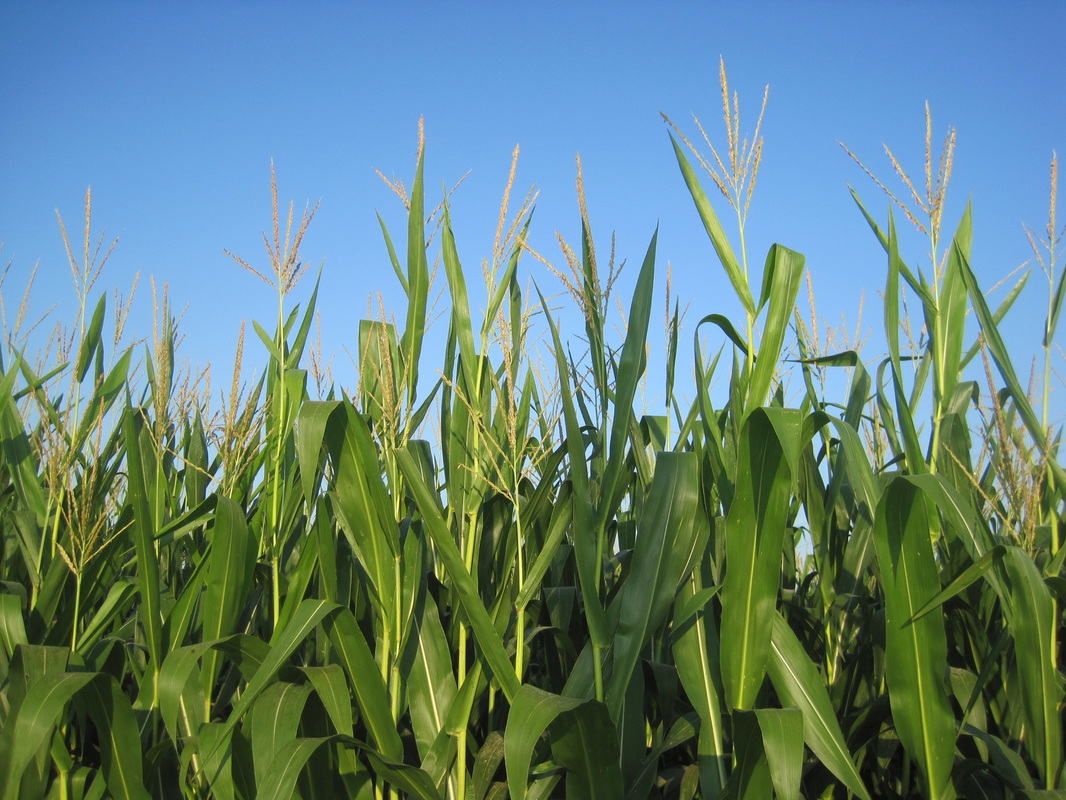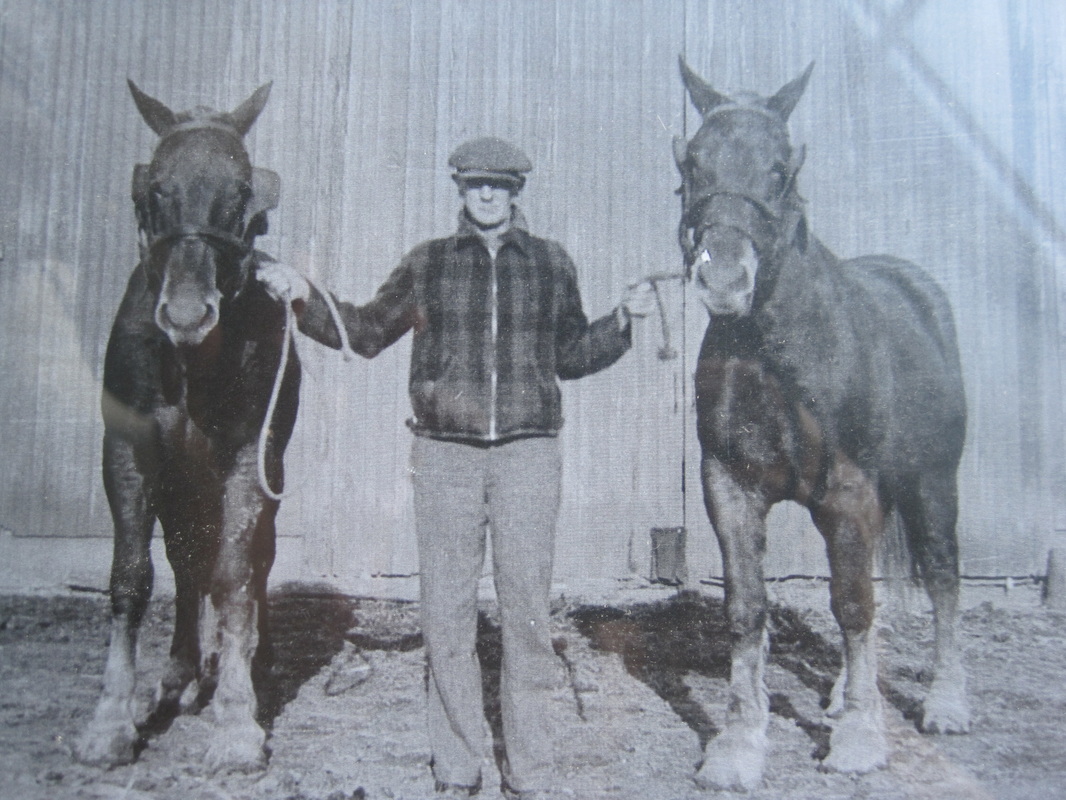|
Last night was a first: we celebrated Christmas on Christmas Eve instead of Christmas Day. I had the day to prep, and it reminded me of those growing-up years on the farm. Since my brothers, now passed on, are quite a bit older than I am, Christmas family gatherings were later in the day on Christmas so they could be with their kids or other extended families first.
It's what I grew up with, and I enjoyed the way we eased into the holiday. I opened gifts from Santa / my parents, and then we had a few hours to get ready for the rest of the family to join us for the big meal, gifts, and fun. This approach worked out equally well after I got married because we could gather at Brian's folks on Christmas Eve, then have Christmas morning with them before heading east to be with my folks and extended family for a dusk celebration. I loved those moments on the curvy, ribbony-hilled back roads of northwestern Union County, Indiana as we approached the farm in late afternoon, knowing all the fun ahead. Yesterday as Brian and I got the house and food ready, I put the finishing touches on a white elephant exchange to do for laughs. There was even a dog category with three family dogs in attendance. The fun took me back to 1981, our first Christmas in Fountain County. That summer Brian had accepted his first school administrative job at Fountain Central. We couldn't sell our trailer back in Richmond, Indiana and didn't know how or when that would happen. So we continued to pay on it and the lot rent, as well as the most reasonable rent on the spacious country home we rented. My job was to attend college full time in person and take every extra short course or correspondence course I could to get my journalism degree and begin the career I dreamed of as a community journalist. With Brian's pay raise, it was possible, but without me contributing any money to the cause and these added expenses, we had little left for extras. There would be no new furniture, clothes, or other indulgences. Yet we were happy as clams. Our dreams were coming true. We had each other. We had lots of plans. That Christmas season, we went to an all-staff dinner party at the home of school secretary Barb Clark. Barb was all things to all people--and turning her family's basement into a party room with food and decorations fit for royalty was one of her endless talents. Barb could do anything well--backward in heels. I was relieved that instead of spending money on "real" presents, we were to bring a gag gift for an exchange. Since those can be anything, and I had a silly fringe-laden top that I never wore and think I surely got in another silly exchange, it was wrapped and gifted. Done. When I opened my designated gag gift, it was a Mennen Speed Stick. You would have thought it was the Hope Diamond. I don't recall our exact words but I know that we carried on about it as though we had hit pay dirt! We looked at each other with delight: something we could use! Something namebrand even! Something we didn't have to spend money on! We held our deodorant close. I don't remember much else about the evening, other than the glow we had between us knowing that our underarms would be covered for a good while and live rent free on our bodies. Yippee! Later, Barb was told the story and she recalled her version of a similar one: the Christmas that she and her beloved husband Hersh, were pressed for money and he bought her a potato masher. She was delighted! As we gathered with our kids, and Ben's wonderful girlfriend, Julie, yesterday, (hugs to Sam's girlfriend Ashley, who was unable to join us with her beautiful daughters), we had the luxury of not only gag gifts (dish sponges and soy sauce, anyone?) but real gifts that cost considerably more. The real Gift of Christmas is the Reason for the season: The Word who was made flesh and came to dwell among us ... (John 1:14). Feeling grateful for life, health, peace, family, friends, and for His gift, according to God's perfect plan. May your Christmases be bright, and all your gag gifts be useful.
1 Comment
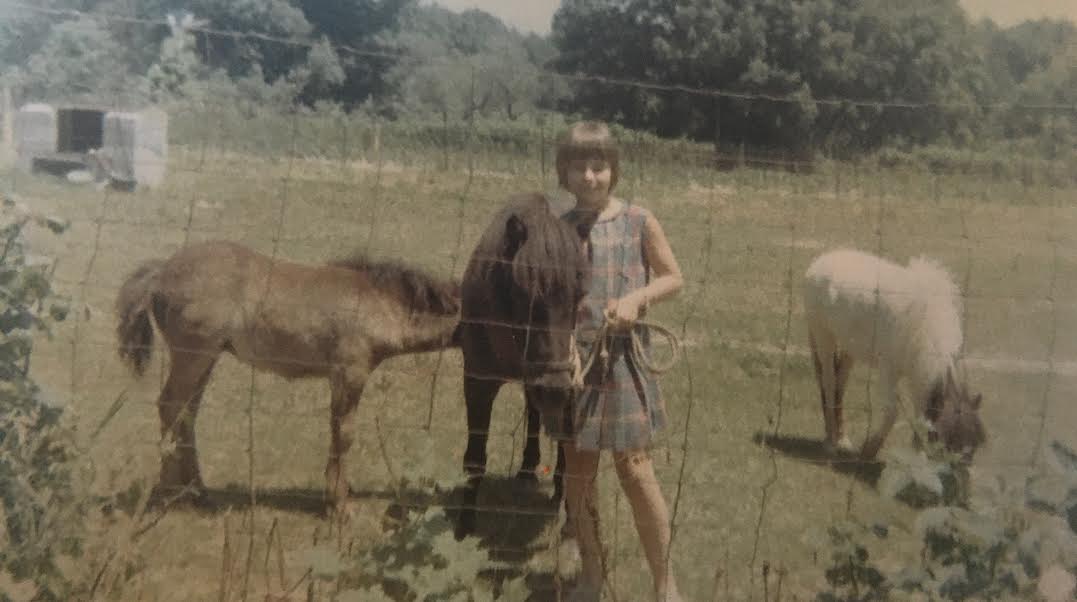 In the pony lot on our farm, (formerly known as the chicken yard for previous livestock residents), I'm with my beloved Ginger, her foal, Frisky, and my nieces' pony, Snowball. Dad built our trash burner (in the background), and placed my handprint in the cement. The photo is well over a half-century old. If a picture speaks volumes, the one I'm about to show you below is the library of my childhood. Recently my niece, Marlene, told me about finding old pictures of our farm, and of her family’s farm. She sent the business link: https://vintageaerial.com. The company’s mission is “collecting and presenting aerial photos of rural America in a way that evokes personal, family, and community memories and encourages the sharing of our common history.” The total collection encompasses 16,562,569 photos taken of U.S. farms and homesteads from the air from the 1960s through early 2000s. In Indiana alone, there are 1,124,058 photos. Even though the archived collection is huge, modern technology makes finding a property that interests you easy. GIS technology identifies where the photos were taken, and places them in the proper time frame. I went to Union County, Indiana on the website and used a map to point to the area where our farm is located. And there it was. I consumed every inch of the landscape. For starters, I looked east of the house, at one of our smaller fields bordered by an east-west county road. On winter nights when the trees were bare, I gazed out beyond that road coming home toward our house to see if I could see a light on the back porch or in a window. Whenever I hear “Back Home Again in Indiana,” when the song speaks of “The gleaming candlelight still shining bright through the sycamores for me,” the tears stream and my throat locks with emotion. I picture that road. It’s personal. But for the grace of God, I came close to dying in that small field. My hands still break out in a sweat when I think about it too hard. Two springs after this picture was photographed, I rode along with another teenager while he plowed that field. He drove too fast over the bumpy land and I went airborne toward the blades of the plow. It happened fast, as accidents do. I saw the blades coming toward my face but somehow, and I can only credit divine intervention, I landed on the ground, unharmed, except for the shock of what could have been, and purple bruises that dramatically covered the width of my thighs before they turned the colors in a Mood ring in the weeks that followed. (Try explaining THAT to your gym teacher.) When I see our home, where my paternal grandparents lived before us, I think first of my late mother who would be 107 now. It is a strange feeling to think of one’s parent being on the brink of too old to any longer even be alive statistically, and to have zero remaining age peers. Home and my mother are one and the same. And again, it’s the music that gets me, this time from “On the Banks of the Wabash, Far Away.” Only for us, the farm bordered the banks of the Whitewater River, nearby. I try to look through the photo's house windows, into the kitchen and living room. I’m sure she’s in there, but I don’t see her… My focus then goes to the barn where I fell out of that haymow once, but again, angels were watching over me … I broke nothing. So many memories there, of feeding the cattle in the barn stalls on winter afternoons after school, of heirlooms in the attic, now dispersed throughout the family; of Dad spending so much time there, and the glow of the barn light on the pond when he worked inside the barn after dark. I think of him welding at his work bench, and how small farmers had to be jacks of all trades. My father was that. Outside the barn is that Hoosier classic, a basketball rim where my father and his younger farmhands would shoot a few hoops. Dad was a Brownsville Lion basketball player and he and I loved to discuss his glory days of old. Still. It’s the slightly opened barn door that gets me. Dad never left the barn yard with the doors open, so I knew: he was there, inside. Seeing this picture 49 years later, something in me wanted to jump out of today and into yesterday; into that 1972 barn yard and see my dad. But it wasn’t until the larger picture arrived, that I got a real surprise, one you can’t see in the online proof, and you have to look hard to find it in the large print. As my eyes fell carefully on the old Ford tractor, I realized that between the tractor and plows stands a person. He’s almost more stick figure than man unless you know who you’re looking for and I was looking for my dad. It’s him! My father is looking up at the plane flying low and slow over his farm. Did he know its purpose was for a photographer on board to take photos? I doubt it. Could he have even dreamt that nearly half a century later, his only daughter would be looking down at him, inside a photo captured against all odds in that moment? Of course not. While my mother was the heart of our home, my dad was the heart of our farm, and the irony doesn’t escape me that he is shown at nearly the center of this landscape, his domain, inside our shared world. Indeed, it was my world. I know every inch of that space, from the grain bin where in the fall I’d climb the ladder with my nieces and nephew and then descend inside where we used rakes to even out the mountains of corn to better help it dry. I think of that practice, and surely how dangerous it must have been without any of us thinking of it then. What if we had fallen into an air pocket and suffocated? More sweaty palms. And the pond. There Dad taught me to swim and my friends and family members had endless summer afternoons on that country body of water where we tucked ourselves into innertubes and floated around or dove off the diving board on our little pier. Both were no doubt made by my dad. There’s more, so much more, from the summer kitchen behind the house that served as our storage shed to Dad’s school bus parked out front, to the driveway to the barn lot where once I rode on the back of a friend’s bicycle and we went flying down that drive, not realizing there was an electric fence straight ahead to keep the cattle corralled. Yes, we plowed right into it and my whole body got quite the jolt as indeed, the electricity was turned on! You’ll never define domestic bliss as a home with a white picket fence if you’ve ever painted one, as I did ours. There’s a glimpse of our front sidewalk and porch where my nieces and I put on “shows” for the neighbor kids featuring singing, tap dancing, and crowning annual queens! We had names for all kinds of parts of our farm. There was the North Farm, some acreage Dad bought in the 1960s to add to his parents’ original purchase. There was the chicken yard, later defined as the pony lot, where the outhouse is shown. There was the croquet yard, south of the house.
See the tree at the south end of the open space? I fell out of that one a couple years before this photo was taken. I’m sure it resulted in a concussion because I was briefly blinded, or remember it that way, until the sight returned while I still sat on the ground. The country road on the west part of the picture bears our family name. Brian asked where I’ll display the enlarged picture. I can’t decide. But I made him promise to one day hang it inside my nursing home room. Note: The photo is used with permission of Vintage Aerial. Find your own farm roots at the website, https://vintageaerial.com. I’d love to hear about the surprises you find. Through the years, I've weeded out my extensive collection of cookbooks, but there were two I planned to always keep, one a hardcover, the other soft, Farm Journal's Timesaving Country Cookbook (Nell B. Nichols, Editor / Doubleday). I would keep them for no other reason than they were on my mother's shelves before they came to mine. Besides church cookbooks that I also have, Mom didn't have any other cookbooks besides these two. She had a large collection of recipes cards, and clippings from magazines and newspapers, and I have all those, but other published cookbooks, no. Yet here's how time gets away from us. The hardcover volume, for example, was published in 1961. So I've had since then to crack it open--and haven't . Until last week. I wasn't even looking for a recipe or seeking a trip down memory lane. No, it was about staging. I wanted to redo the contents of the tiered shelving alongside our kitchen cabinets. So I was looking for some cookbook props whose size would fit the narrow shelf space. I took the sun-faded dust jacket off Mom's book and what do you know? It suddenly looked as though it could have been published yesterday. Pristine, crisp, and with an attractive red spine that would go well on the shelf. Okay! I liked the results. But before placing it, what I liked even more, was inside inside the cookbook. It was a gift from my mother: An envelope taped to the inside blank cover page, holding clipped recipes from magazines for Hungarian Fruit Squares and Snappy Beef Stew. The outside of the envelope contains Mom's own personal table of contents for recipes that stood out to her.
Interesting. Ha, there's one for Lard Crust. You don't see that anymore, do you? Inside, Mom paperclipped a section of pages together. There's no comment, so I don't know what that means, but I'm leaving the clip there. I've found it to be true when it comes to old family Bibles--be sure to look inside them for all manner of information about births and deaths, clipped obituaries and other little surprises of clippings and poems and stories that your ancestors thought enough of to store what turns out to be securely, inside the family Bibles. But I hadn't even thought about the cookbooks. Hungarian Fruit Squares don't float my boat (not a fan of apricots) and putting cheese in beef stew doesn't quite work for me either. But I'll check out the Porcupine Meat and the Salmon Scallop. Maybe. When I need a Mom fix, I'll look inside the cover and see my mother's handwriting. My mother, who passed at 92, would be 108 this year; almost now beyond the possibility of anyone her age still being around. She'll forever be in my heart. As for the second cookbook, oddly enough, it was the paperback version of the hardcover. I'm wondering if one of these books belonged to my Grandma Jobe and was so well liked, they both had a copy. I didn't keep the softcover. Who knew? Guess it turns out I can't keep everything. So, I needed, no wanted, some pumpkins to scatter in our landscaping. The sign placed along the highway pointed to a rural pumpkin patch. When I got there Friday, I spotted a large assortment of orange pumpkins of various sizes, along with a good many miniatures in white and orange. But where were the prices? Then I saw this money box, above, and this sign, below. WHO does that? Who entrusts his large crop of pumpkins to consumer goodwill? The Hoosier farmer who lives at this residence, that's who. So I looked around, trying to decide which pumpkins I would cart home, how many I needed, and where I'd place them. The farmer spotted me and walked down his driveway. He told me to take what I want and leave what I thought was fair. I looked around some more. Maybe they weren't perfect, but neither am I. And how perfect do they need to be to adorn our landscaping and porch just fine? Then ... he walked back to the house and left me to my own assessment on what the bounty is worth. I hope he liked what I left. I think I was actually more generous than had I bought them at a pricey agri-tourism attraction, well known for its annual harvests. I was touched. And inspired by the generosity he offered to not only do up the exterior of the house, but hang the fall wreaths, get out the beautiful fall pillow friend Gay gifted me with in the summer, and fill a bowl with cinnamon-infused potpourri. Then Sunday morning, when I got ready for church, I decided to wear my new sweater. It's a goldenrod hue, a color I never wear, but I like it. It was on the final clearance rack at a favorite local consignment shop, Sisterhood Exchange, in Pendleton. I was drawn to the subtle ruffle along the row of buttons. But what sealed the deal was the $1 pricetag. I'll be sporting this a lot this fall. Happy fall, y'all!
The following article appeared in a special section Sunday in The Courier-Times under the theme Cultivating Henry County: Family Farms. Any time I can mix it up with some llamas, it's a good day. by Donna Cronk For years, Allen and Sue Davis and their daughter, Lindsay (now Lindsay Brown), raised sheep on their rural New Castle property, west of Cadiz. After Lindsay's tenth year showing 4-H sheep, she and her mom were at the Indiana State Fair and watched a llama exhibition. But they did something more than merely watch. "We bought two llamas," recalls Sue of their quick decision that day. The two geldings, Prince and Romeo, were the start of a new era for the family, that of raising and showing llamas all over the country as well as Allen becoming a show judge with the Alpaca and Llama Show Association. "It just kept growing," Sue says of their interest in these animals that has spanned almost 25 years. "We've met lots of nice people from all over the U.S. and Canada." At one time they also bred and sold the animals but now maintain their herd for their own family's enjoyment. There are two classes of showing llamas: performance and halter. The Davises work in the halter class. When judging llamas, Allen says, "You're basically looking at the confirmation of the animal structure. You watch their walk, squareness of front legs and rear legs, walk, top line, sqareness of their rump, length of neck." Historically, llamas were used for packing / utility animals in South America where they were better than horses or mules for that purpose. They are also guard animals by nature. Interestingly enough, Sue says that Noblesville has the largest 4-H llama youth association in the nation with an average of 100 4-Hers participating. Lindsay says they are used on farms within herds to protect the other animals. If they become aware of danger, they sound a special "alarm" call to alert the others. A herd of llamas will surround its own young ones to protect them from predators. And when llamas are content, they hum. Says Allen, "They're like a dog. A lot of it is in the breeding." Other attributes of the creatures are that they are people-pleasers, very clean and can even be potty trained. The Davis farm, called Rose Cottage Llamas, is home to the one-time national grand champion wool male llama, a Bolivian llama named Conductor. The family says he won every show he was in for three years. He also served as national reserve champion during his prime. He is deceased now but a large, framed picture of him is featured on a wall. Llamas can live into their 20s. Allen says of llamas, "When you are around them, they have a calmness to them that makes your mind and your body calm." He says they are quick learners. Says Sue, "I like to watch their gracefulness. They're nice to each other."
Adds Lindsay, "They always remember you by your scent." Lindsay says of the animals, "They all have their own personality. There's always one female in charge." Lindsay and her children, Luke and Layla, were on hand to talk about the llamas on the day The Courier-Times visited. The Browns make their home in Hagerstown. Right now the rural New Castle family has a herd of 10 females and three males. Allen owned AJ Pools in Anderson for 40 years. He's now retired. Sue, who is a high school special education teacher at Shenandoah, says she misses showing the animals. However, with two young grandchildren, who knows? Rose Cottage llamas may again be back in show rings once again. I have an old iron bell from my folks' farm where I grew up, and where my paternal grandparents lived before that. There's no reason I would need a farm bell. There are no men in the field awaiting its ring to dinner 'round the threshing table.
But I like it because it reminds me of such scenes from farms of old. For years after it left Dad's barn, it sat in first one garage, then another, until finally I asked our friend Monty Foust to post it in our backyard. I like it there and wonder why we didn't raise it sooner. It does require a bit of maintenance. It had been painted silver once, for what reason I can't guess, and I painted it black. Now it needs a good touching up a couple times a year, most notably, after the winter months. Most notably, now. But its fresh coat will have to wait a while. Things are pretty busy inside that bell. A few weeks ago I noticed that a family called Robin had claimed squatters' rights by building a nice little home there, sheltered sweetly by the protective shell of iron. I've stayed out of Mrs. Robin's way, observing from the window that she's been spending a lot of time maintaining her new digs which she decorated beautifully with found bits of dried grass and straw. Some years robins nest in ferns on our back porch, but I don't have the plants up yet. One year a front-door wreath hosted a family. When the family sets up housekeeping in an eye-level fern or on my front door, I take the liberty of carefully peeking into the nest. Never touching, mind you. Sometimes the tiny birds mistook me for their mother and opened their mouths wide, only to be briefly disappointed that I couldn't deliver a juicy worm. But soon, their mother swooped in and picked up the tab for lunch. This bell is too high and I might do great damage to the family dynamic if I got out a ladder. So I watch from afar and was rewarded while ago when I saw a tiny head lift toward the heavens and a mouth eagerly await a to-go order. Soon enough, the cozy nest will no longer suffice, and the birds will wing away, as birds and boys do, and their mother will do something else with her time besides deliver lunch and cuddle with them. Meanwhile, here's to you, Mrs. Robin. Enjoy your family. Stop by again next year if you want. It’s a treat whenever my friend Sandy, a farmer's wife, can get away from the joys of retirement long enough to squeeze me in for lunch at Café Royal in New Castle.
I love to hear about her life on the farm, about her horses, her granddaughter Carly, about Mike, her farmer husband, a retired school-bus-driver. Even though unlike me, Sandy is tall and blond, beautiful and inspiring, sometimes I think in other ways we were separated at birth. We can talk for an hour without taking a breath and it feels like five minutes. Yesterday she brought me a treat: a bag brimming with a dozen beautiful ears of yellow sweet corn, crisp and tender, delicious and perfect. Once we finished lunch, I rushed off toward work while she got an iced-tea refill. I had forgotten her request: Remind her not to forget to get the corn out of her vehicle. Back at the newspaper office, I noticed someone pulled in beside me at about the same moment I did. It was Sandy with the forgotten sweet corn! I put the cobs in the seat beside me so that I didn’t forget them again once I got home. The funny thing was, I couldn’t forget about that corn. Instead, I thought of little else. Corn reminds me of my dad. Some joke about Indiana corn with a slogan that cajoles, “There’s more than corn in Indiana.” Or people say they live in the middle of a cornfield as though that’s a bad or boring thing. When I told Brian last night I planned to devote my next blog to corn, he groaned, adding that only I would write about something as corny as, well, corn. He suggested a two-part series: Corn and Beans. This morning on the way to work, I stopped along the road near Shenandoah High School for some photos of corn growing in the field. I looked closely at that healthy stand of Hoosier gold and I saw, in my mind's eye, my dad. So many things change but corn and my dad take me back. Back home. OK, back home again. I think of that particular gold color, ears of field corn in the fall that are the exact shade of a school bus. And how the buses are back in action and that too, reminds me of him as much as do the corn stalks standing so straight and uniform in the morning sun and dew. Then I realized with a start that my father has been gone for 25 years this summer. How can that be? He’d had advanced Alzheimer’s disease for a while but still, the July he passed, his death came as a shock, as death always does. His natural habitat was our big, old barn. He was many things: A beef, corn and soybean farmer, a school-bus driver for 32 years, an artist, an inventor, a guy who could figure out how to fix anything, a seller of Lincoln Arc Welders on the side, and a repairman for dairy refrigeration operations besides. He could play a violin, roller skate with the best of them, shoot a basketball, kill you at croquet. He could, in my mind, do anything. He was king of his little slice of rural kingdom. But for today, I think of my father the farmer and how we would drive around the country roads to check on the crops, and in those moments, and many others, how I knew to my core how much I loved our farm, and how lucky I was to be that farmer’s daughter. So Sandy and Mike Moore: thanks for the beautiful ears of corn. And Dad: thanks for the memories. I’ll be passing through Union County tomorrow. I may have to leave the house early. I may have to take the back roads to get there. Just so I can watch the corn grow. I guess you know you are a farm girl at heart when you look forward to a barn festival and tour of southern-Indiana barns. And all the better when you get to take the tour with a van load of like-minded gal pals.
That's the plan for Saturday, Oct. 3, and I thought if you are a farm-geek like me, you might want to know about the doings. A bunch of interesting barns are on tour in Madison and Switzerland counties from 9-5 tomorrow. Some are drive bys, and others, I think you can go inside. Then at 5, just outside of Madison, there's the grand finale, farm style, it's a Barn Fest, with food, music and more. I wonder what they mean by "and more?" A hoe-down? A shindig? Guess we'll find out. Yee-haw. Check out the Indiana Barn Foundation on Facebook for details about the festival. (Scroll down; they curiously don't have it as the lead post). Basically, you'll need to slip by the Switzerland County or Madison (city, not county) tourism bureaus to pay a small fee for directions and addresses and you are off. As for the photo with this post, it's my late grandfather, Roscoe Jobe, with his draft horses. This is one of, if not my very favorite old family photo. For one thing, Roscoe looks exactly like my own father, and for another, the photo is taken in front of the barn that was on our farm all of my growing up years. It's still there today. I never knew Roscoe -- he passed on before I was born -- but Dad spent countless hours in that barn. It was, I suppose, his office, so to speak. I always found something comforting about seeing the barn lights aglow at night, spreading yellow light across the barnyard evenings when he was working late welding something that broke or doing whatever it was he did in his special domain. When I think of Dad, I see him in his barn. In this barn. I came along when we had tractors, not work horses. I would have loved to have seen and known them. But now, it's all part of Indiana farm history, not the way things are today. But tomorrow, we'll take a tour of the way things were. Can't think of a better way to spend an October Saturday. Maybe if you don't have anything else on your plate, you'll join us; we'll offer up a friendly howdy-do wave as we pass you on the back roads. It's a rural thing, you know. |
|
